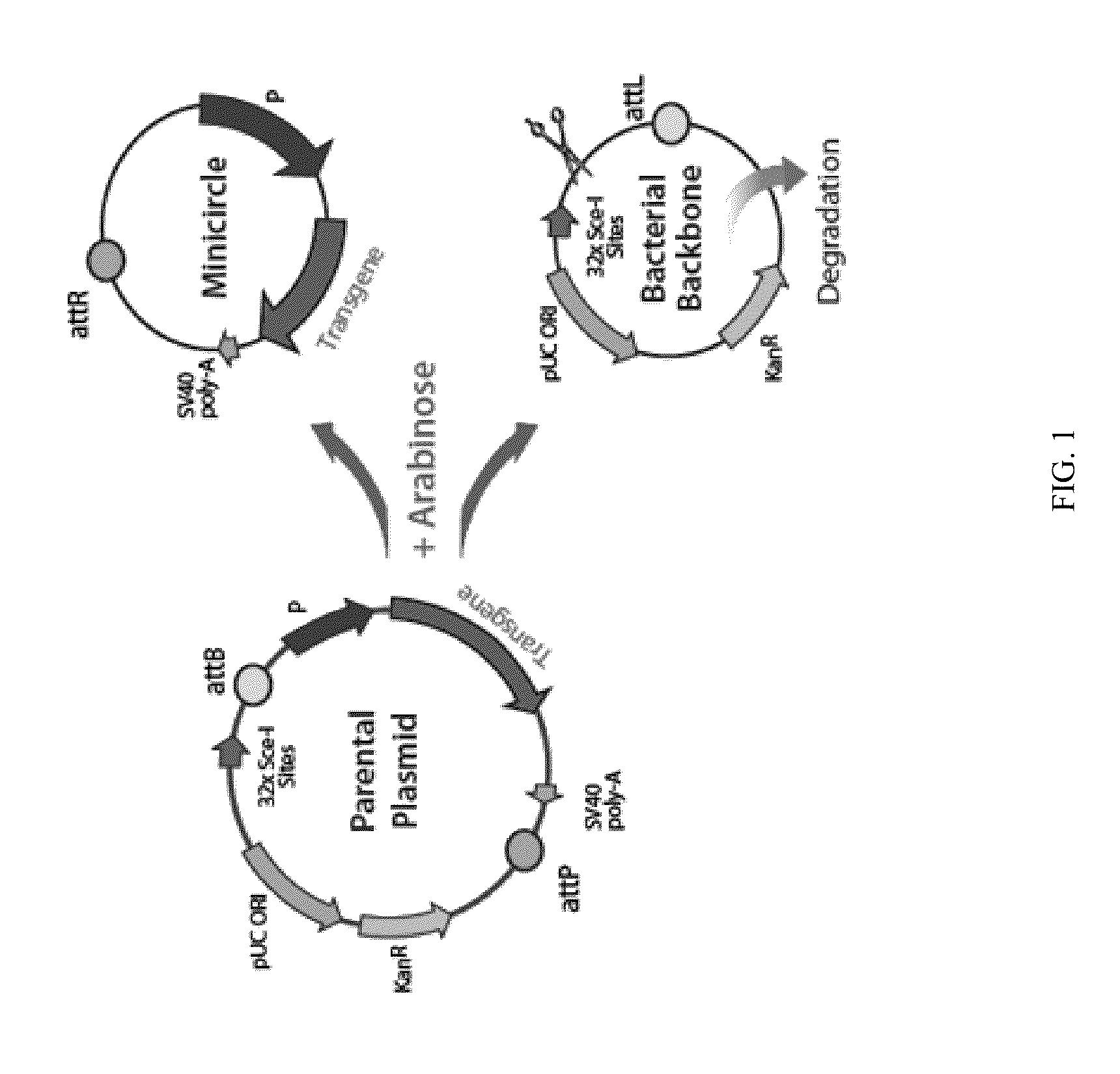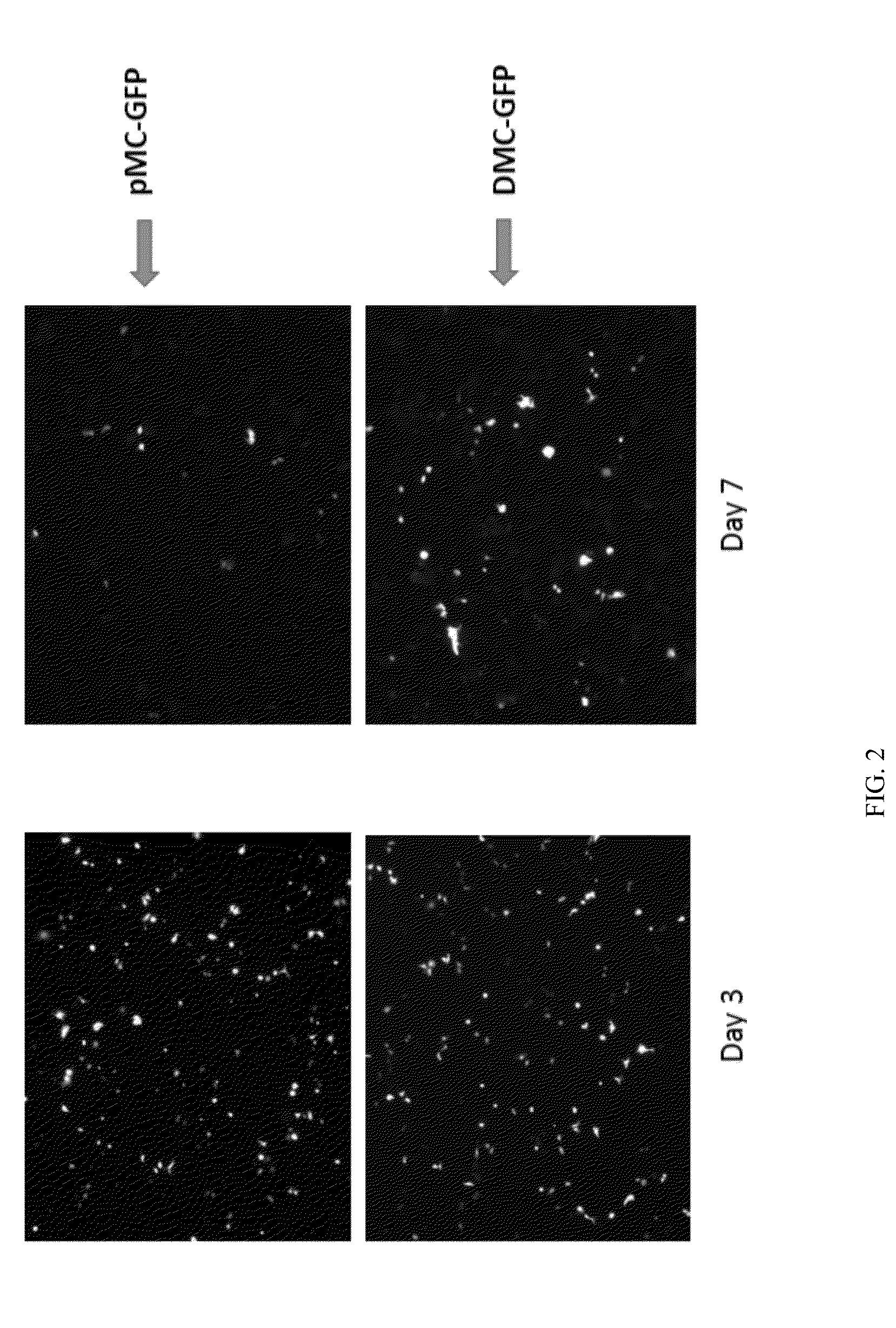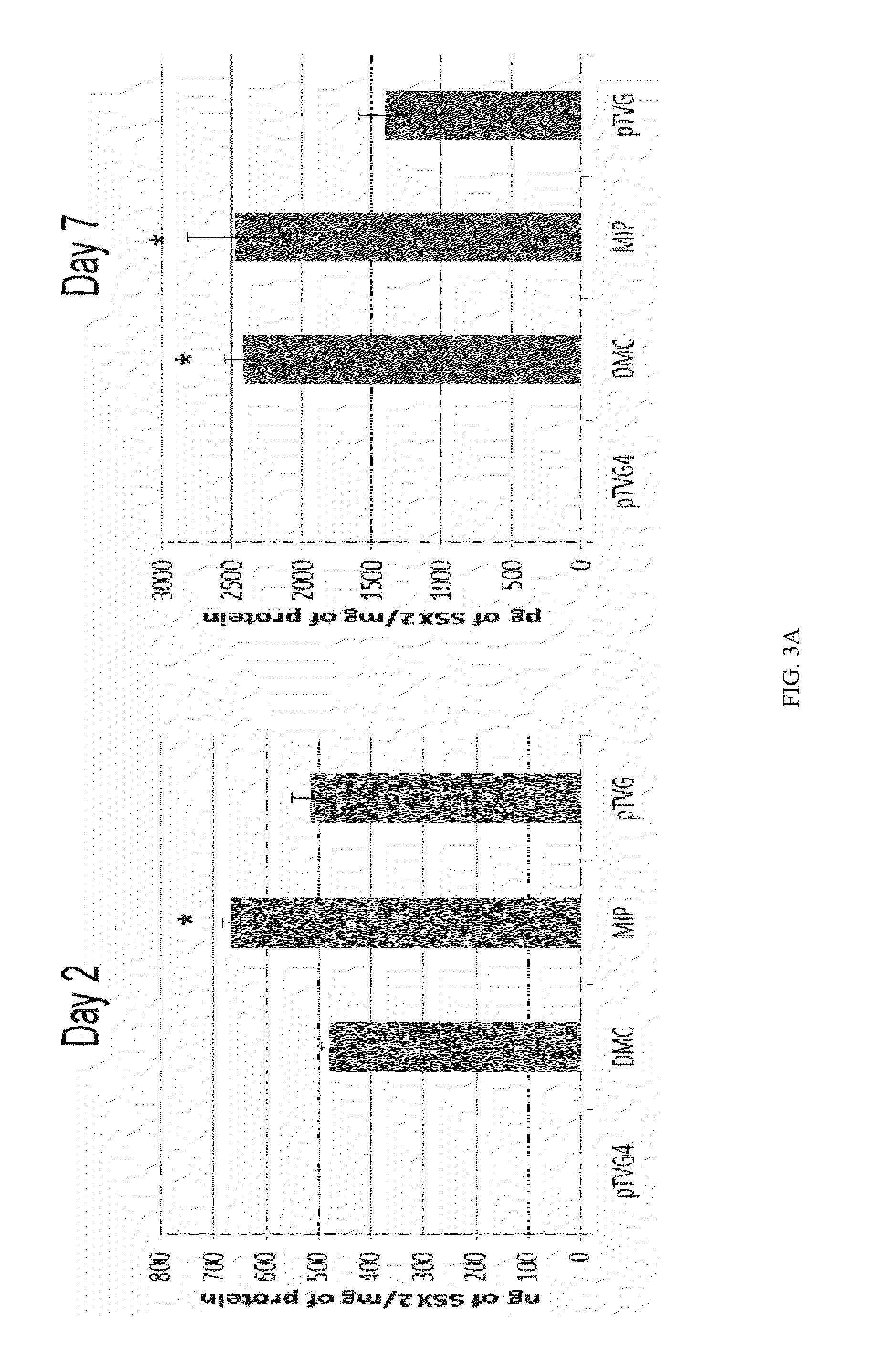Mini-intronic plasmid DNA vaccines in combination with lag3 blockade
a technology of plasmid dna and lag3, which is applied in the field of mini-intronic plasmid dna vaccines in combination with lag3, can solve the problems of complex prediction of the efficacy of potential anti-tumor vaccines using such vectors, increased expression of polypeptides of interest, and difficult production of dna minicircle vectors in sufficient quantities for large-scale clinical applications, etc., to reduce the number of cells of the target typ
- Summary
- Abstract
- Description
- Claims
- Application Information
AI Technical Summary
Benefits of technology
Problems solved by technology
Method used
Image
Examples
example 1
Minicircle Vectors and Mini-Intronic Plasmid Vectors Facilitate Sustained Antigen Expression and Production of Antigen-Specific T Cells
[0094]In this Example, we demonstrate that using minicircle vectors or mini-intronic plasmid vectors as model DNA vaccines promotes more sustained antigen expression in the cells taking up the vectors, as compared to using conventional plasmid vectors. Furthermore, we demonstrate that using minicircle vectors or mini-intronic plasmid vectors as model DNA vaccines elicits a stronger T cell-mediated immune response, as compared to conventional plasmid vectors.
A. DNA Vectors Used.
[0095]Conventional plasmid vectors. In the immunization experiments reported below, the conventional plasmid vector pTVG4 was used as a vector control. The pTVG4 is the parental vector that does not contain an antigen. The construction of pTVG4 is described in U.S. Pat. No. 7,179,797, which is incorporated by reference herein in its entirety. The plasmid vector containing the S...
example 2
Protection Study
[0113]Prophylactic MIP-SSX2 immunization is shown to protect against subsequent tumor challenge in the mouse tumor model. FIG. 7 is a schematic diagram illustrating the tumor model study design used (bottom) with the prophylactic study demonstrating protection against subsequent tumor challenge. HLA-A2 expressing mice were first immunized four times (day 0, 13, 26, 39) at 2-week intervals with MIP-SSX2, pTVG-SSX2 or pTVG4 and subsequently challenged with 5*104 A2 / Sarcoma cells expressing SSX2 on day 52 to assay for anti-tumor efficacy of the different constructs. The average tumor volume after immunization with prophylactic MIP-SSX2 or plasmid DNA encoding SSX2 (pTVG-SSX2) was monitored over time and the results are depicted in FIG. 8A. FIG. 8B is a graph depicting the frequency of tetramer CD8+ T cells after prophylactic immunization.
Example 3
MIP DNA Vaccines are Less Effective at Shrinking Tumors Than Conventional Plasmid DNA Vaccines, Because of Unexpected MIP-Fac...
example 4
Improved immune response using MIP vaccine when combined with a LAG-3 blocking agent
[0121]The anti-tumor effects of MIP-SSX2 immunization can be rescued by combination with anti-LAG-3 antibody (αLAG3). HLA-A2-expressing mice (average of n=6 per group) were implanted subcutaneously with A2 / Sarcoma cells and immunized bi-weekly with plasmid DNA encoding SSX2 (pTVG-SSX2), mini-intronic plasmids encoding SSX2 (MIP-SSX2), or vector control (pTVG4) alone or in combination with 200 μg of a monoclonal antibody against murine LAG3 (clone C9B7W, BioXCell) administered 24 h and 72 h after vaccination. Tumor growth was measured by volumetric measurements 3 times a week. FIG. 12 is a graph showing tumor growth as a function of time. FIG. 13 is a graph that shows individual tumor growth curves for each animal treated with MIP-SSX2 alone. FIG. 14 shows individual tumor growth curves for each animal treated with MIP-SSX2 in combination with LAG3 blockade.
[0122]MIP-SSX2 in combination with αLAG3 is ...
PUM
 Login to View More
Login to View More Abstract
Description
Claims
Application Information
 Login to View More
Login to View More - R&D
- Intellectual Property
- Life Sciences
- Materials
- Tech Scout
- Unparalleled Data Quality
- Higher Quality Content
- 60% Fewer Hallucinations
Browse by: Latest US Patents, China's latest patents, Technical Efficacy Thesaurus, Application Domain, Technology Topic, Popular Technical Reports.
© 2025 PatSnap. All rights reserved.Legal|Privacy policy|Modern Slavery Act Transparency Statement|Sitemap|About US| Contact US: help@patsnap.com



